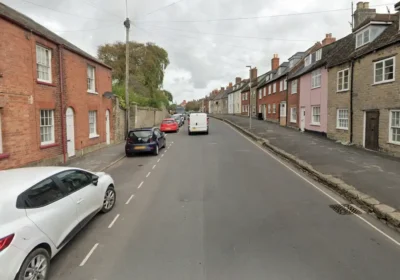GRITTERS in Dorset are ready to go as the cold winter months begin.
Dorset Council’s gritting crews are gearing up to help ensure the county’s roads stay open as temperatures drop.
More than 90 members of the council’s regular Highways team is on standby for on-call duties day and night, with nearly 13,000 tonnes of rock salt in store ready to coat the roads.
The teams manage 684 miles of roads, with 23 main gritting routes, which are treated when road surface temperatures are expected to drop below 1C.
Community routes, serving smaller villages and hamlets, are also treated during prolonged cold spells.
Cllr Ray Bryan, portfolio holder for highways, travel, and environment, said: “Our dedicated highways crews step away from their regular roles when the temperatures fall to keep residents, businesses, and emergency services moving and as safe as possible.
“Last winter was particularly busy, so we’re hoping temperatures don’t drop so regularly this year, but whatever the coming months bring, we are ready.”
Cllr Bryan also urged caution among drivers.
“Conditions can change quickly, so please take care when out and about,” he said.
“If you find yourself behind a gritting vehicle, please be patient and take care on freshly gritted roads.”
Tips for driving on gritted roads
Salt (grit) needs to be dissolved into a solution to work.
When roads are gritted, vehicles need to travel on them to ‘activate’ the grit.
So, if you travel early in the morning or are the first to drive on a gritted road, drive with care.
However, Dorset Council says even on treated roads, it cannot be guaranteed there won’t be ice and rain can wash salt off the road, as well as water run-off from fields.
Which roads are gritted in Dorset?
The 23 main gritting routes, collectively known as the precautionary gritting network, encompass A, B, and well-used C class roads.
They also include:
• Links to hospitals, large industrial estates, transport interchanges, emergency services stations (including manned Coastguard and RNLI stations), and other critical infrastructure.
• Routes to all urban schools with more than 500 pupils and rural schools with more than 350 pupils.
• Primary bus routes with substantial frequency.
• Main routes through towns and villages with populations of more than 750.
Gritting is also carried out on the A35 trunk road between Bere Regis and Charmouth on behalf of National Highways.
If it snows, gritters clear and treat routes on what is known as the ‘priority ploughing network’.
These key north/south and east/west routes are cleared of snow before clearing the remaining gritting network.
As the gritting crews comprise Dorset Council employees who carry out other highways maintenance roles, there may be times in particularly cold spells when more crews are needed for gritting.
This may delay other regular highways work taking place.

When are roads in Dorset gritted?
Dorset Council says it uses a route-based weather forecasting system to identify which roads need to be gritted.
This enables it to grit roads only when needed, which it says is better for the environment, and saves money, with less salt used and fewer lorry journeys.
The gritting teams are alerted when temperatures on the road are set to drop below 1C.
Gritting facts and figures
In winter 2022-23, saw one of the longest coldest winters for many years, with Dorset gritting crews called into action 170 times over 148 days between November 18 and April 14.
That was double the number of call-outs in 2021/22.
In total, they carried out 1,659 individual route treatments, using 5,615 tonnes of salt.
The busiest month for gritter drivers was December, when they were called out on 19 days and laid 2,128 tonnes of salt.











Leave a Reply